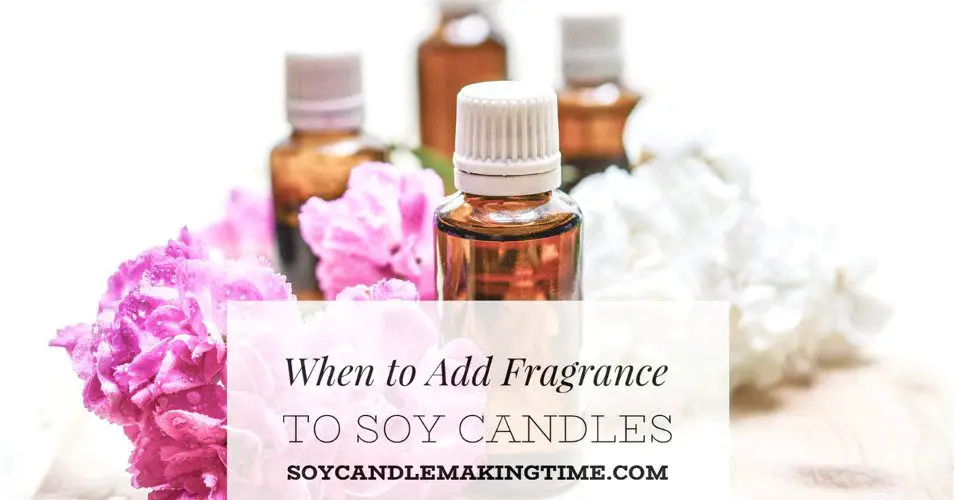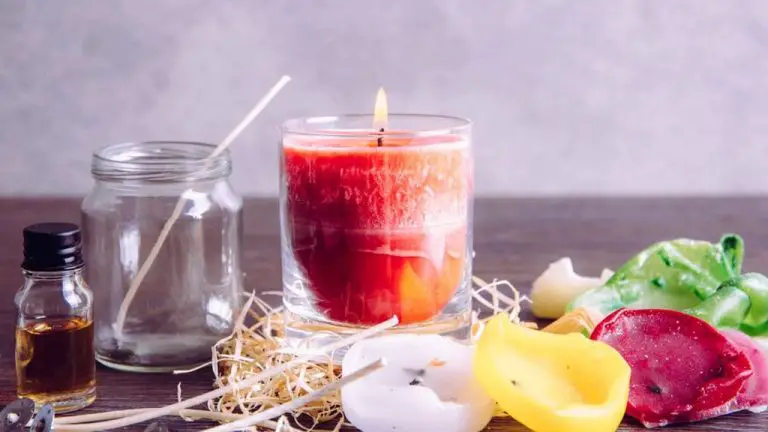What Is The Best Percentage Of Fragrance Oil In Candles?
Fragrance oils are an essential component of scented candles. They contain concentrated aromatic compounds that provide candles with their distinct and pleasant scents. When added to wax, fragrance oils are released into the air through evaporation as the candle burns, filling the surrounding area with fragrance.
Choosing the right percentage of fragrance oil is important for achieving optimal scent throw and performance in candles. Using too little fragrance oil can result in a candle that lacks a satisfying aroma. Conversely, using too much fragrance oil can negatively impact burn quality and scent throw. Finding the ideal balance is key.
Most experts recommend a fragrance load between 5% to 10% for soy wax candles. However, the optimal amount depends on several factors. Testing different fragrance oil percentages allows candle makers to find the ideal range for each specific candle fragrance and wax type.
Recommended Fragrance Oil Percentages
The recommended percentage of fragrance oil in candles varies depending on the expert, but there are some general guidelines to follow:
Most experts recommend using 6-8% fragrance oil for soy wax candles. This means for every pound (16 oz) of wax, use 1-1.3 oz of fragrance oil. A common recommendation is 0.7 oz fragrance oil per pound of wax, which equals about 7% (Source: https://www.scandinaviancandle.com/blogs/faq/how-much-fragrance-oil-to-use-in-your-candle).
For paraffin wax candles, a slightly higher fragrance load of 8-10% is often recommended since paraffin is less porous than soy wax. This equals about 1-1.5 oz fragrance oil per pound of paraffin wax (Source: https://www.candlesoylutions.com/custompage.asp?page=Percentages).
Gel wax can handle an even higher fragrance load between 10-15% since it’s thicker than other waxes. Aim for 1.5-2 oz fragrance oil per pound of gel wax.
Beeswax and coconut wax generally use lower fragrance loads closer to 5-6% or 0.8-1 oz per pound.
These percentages provide a good starting point, but you may need to adjust up or down depending on the performance of each specific fragrance oil.
Factors That Determine Ideal Percentage
There are several key factors that determine the ideal percentage of fragrance oil to use in candles:
Wax Type

The wax you use makes a big difference. For example, paraffin wax can hold more fragrance oil than soy wax. You would generally use a higher percentage of fragrance in paraffin candles compared to soy. According to this source, a good starting point is 0.5-1 oz of fragrance per pound of paraffin wax.
Candle Size
Larger candles need a lower fragrance oil percentage than smaller candles. This is because the fragrance has more wax to diffuse through in a larger candle. A good rule of thumb from this source is 5-7% for large candles, 8-10% for medium candles, and 10-12% for small candles.
Scent Intensity
Some fragrance oils are naturally stronger than others. You’ll need less of a very concentrated fragrance oil. Testing the intensity first with toothpick samples is recommended.
Testing Different Percentages
When formulating a candle, it’s recommended to start by testing a baseline fragrance oil percentage and adjusting from there. Most candle makers start with a fragrance load between 5-8% as a starting point according to sources like Bramble Berry.
To test different percentages, make a series of small test candles, keeping all the variables (wax, wick, vessel) the same except for the amount of fragrance oil. It’s best to vary the fragrance oil in increments of 0.5-1% between test candles. This allows you to pinpoint the ideal amount of fragrance for that particular wax and fragrance blend.
Testing with small votive or container candles makes this process faster and more economical. Take notes on each test candle, evaluating fragrance strength both cold and hot. The goal is to find the lowest percentage that provides desired scent throw without negatively impacting burn quality.
Maximizing Fragrance Oil
There are a few techniques you can use to maximize fragrance oil in your candles without sacrificing burn quality:
Double-wicking – Using two wicks in a candle instead of one can help disperse more fragrance as the candle burns. The extra wick provides more surface area for the melted wax to evaporate from, releasing more fragrance. Just make sure to test burn the candle first to ensure an even burn with two wicks.[1]
Using vybar – Adding a small amount (1-3%) of vybar to your candle wax can help anchor the fragrance oil molecules so less fragrance evaporates from the melted wax pool. This allows you to use more fragrance oil while maintaining an even burn.[2]
Wax with high fragrance load – Some waxes like soy wax are designed to hold higher amounts of fragrance oil, allowing you to scent candles more strongly. Be sure to follow manufacturer guidelines.
Testing is key when maximizing fragrance – Small adjustments in percentage can make a big difference in performance. Always test burn candles with increased fragrance loads before selling or gifting.
Minimizing Fragrance Oil
There are a few situations where you may want to use less fragrance oil in your candles:
- If you are finding the fragrance to be overpowering or giving you headaches, reducing the amount of fragrance oil can help.
- Certain fragrance oils are very strong and only need to be used in small amounts. For example, essential oil blends like peppermint or eucalyptus are quite potent. Reducing the fragrance percentage to 5-7% may provide sufficient fragrance.
- When making candles with natural soy, coconut, or beeswax, these waxes already have their own inherent scent. Using less fragrance allows their natural aroma to come through.
- If you want to create a lightly scented candle, using less oil such as 3-5% will provide a delicate fragrance.
- For candles with multiple fragrance oils blended together, reducing the amounts of each oil allows their scents to mingle instead of one dominating.
- During hot summer months, lighter fragrances are preferred. Minimizing oil to 5-8% prevents an overpowering smell in warm environments.
The optimal amount can vary based on the particular fragrance oil, the wax used, the candle vessel, and personal preference. Testing different oil percentages is the best way to find the ideal minimal amount that still provides sufficient scent.
Finding the Right Balance
When determining the ideal fragrance oil percentage for candles, it’s important to find the right balance between achieving a satisfying scent throw and maintaining high candle quality. Using too much fragrance oil can negatively impact burn performance, while using too little may result in a weak scent when burning. The key is optimizing fragrance load to create an evenly filled, clean burning candle that also fills a room with fragrance.
According to Scandinavian Candle, the recommended fragrance load for a soy wax candle is 5-10% of the weight of wax used, with 6-8% often optimal for balancing performance and scent. All Seasons Wax Company suggests 6-8% as well, noting this provides a good scent throw without impacting the flame (Scandinavian Candle). Exceeding 10% fragrance oil can lead to issues like soot, sputtering, tunneling, and fading scent. On the other hand, using less than 5% fragrance may not adequately scent a room when burning.
Testing different fragrance percentages between 5-10% during the research and development process can help candle makers pinpoint the sweet spot for a given wax, wick, fragrance oil blend, and vessel. Many find the 6-8% range optimal for soy wax candles, providing noticeable fragrance without compromising burn or wax appearance. However, lighting, vessel size, room size, and personal preference should all be considered as well when balancing fragrance percentage.
Top Fragrance Oils for Candles
When it comes to selecting fragrance oils for candles, there are a few scent categories and specific oils that tend to be the most popular choices:
Fruit scents like apple, peach, and strawberry are classic fragrance oils for candles. These sweet, fresh fruit notes create pleasant, inviting candles. Specific fruit fragrance oils that perform well in candles include Spiced Pear & Whiskey and Pumpkin & Persimmon according to one source Jessica Welling Interiors.
Bakery and dessert scents are another top category for candle fragrances. Scents like vanilla, sugar cookie, and cinnamon bun are perennial favorites. These gourmand fragrances evoke feelings of warmth, comfort, and home.
Florals like jasmine, lavender, rose, and lilac allow for a romantic, feminine candle scent. These sophisticated florals work well on their own or blended with creamier notes.
Woodsy fragrances like pine, cedar, and mahogany create an outdoorsy, masculine vibe. Pairing these with citrus or spice oils can provide an invigorating seasonal aroma.
Overall, opting for fragrance oils with complexity like spice-infused fruits or rich, creamy vanillas often makes for the most appealing and long-lasting scented candle.
Safety Considerations
When using fragrance oils in candles, it’s important to follow usage guidelines and safety precautions. According to the National Candle Association’s Guide to Aromatherapy and Essential Oils, fragrance oils should not exceed 10% of the wax by weight in containers, and 5-8% in pillars and votives. Exceeding these percentages can lead to issues like fragrance throw that’s too strong, scent retention problems, and potential safety hazards.
Some key safety considerations include:
- Avoid using fragrance oils that contain chemicals like phthalates or toluene, which can be toxic when burned.
- Read fragrance oil safety data sheets to ensure you understand any risks or restrictions.
- Test candles with new fragrance oils on a small scale first to check for proper burn and scent throw.
- Adhere to usage limits from reputable suppliers – never exceed their recommended percentages.
- Make sure your wax fully incorporates the fragrance oil to avoid chemical separation.
Following safety guidelines from the National Candle Association, fragrance oil suppliers, and the candle making community will help ensure your homemade candles burn cleanly and safely.
Conclusions
The ideal percentage of fragrance oil in candles depends on several factors, including the candle’s wax type, colorants used, vessel material, and desired scent strength and throw. Most experts recommend starting with 6-8% fragrance oil for paraffin wax candles and 8-10% for soy wax. Testing is key to find the right balance for each specific candle. Using too much fragrance oil can lead to issues like fragrance burn-off, soot, and poor performance. The top oils for candles are complex blends and single notes like fruity, floral, woody, and spice scents. Safety should always come first when working with fragrance oils by wearing gloves, ventilating properly, and following usage rates. The takeaways are to start low, test different percentages, and increase gradually until finding the ideal amount that maximizes scent while minimizing any potential issues.



